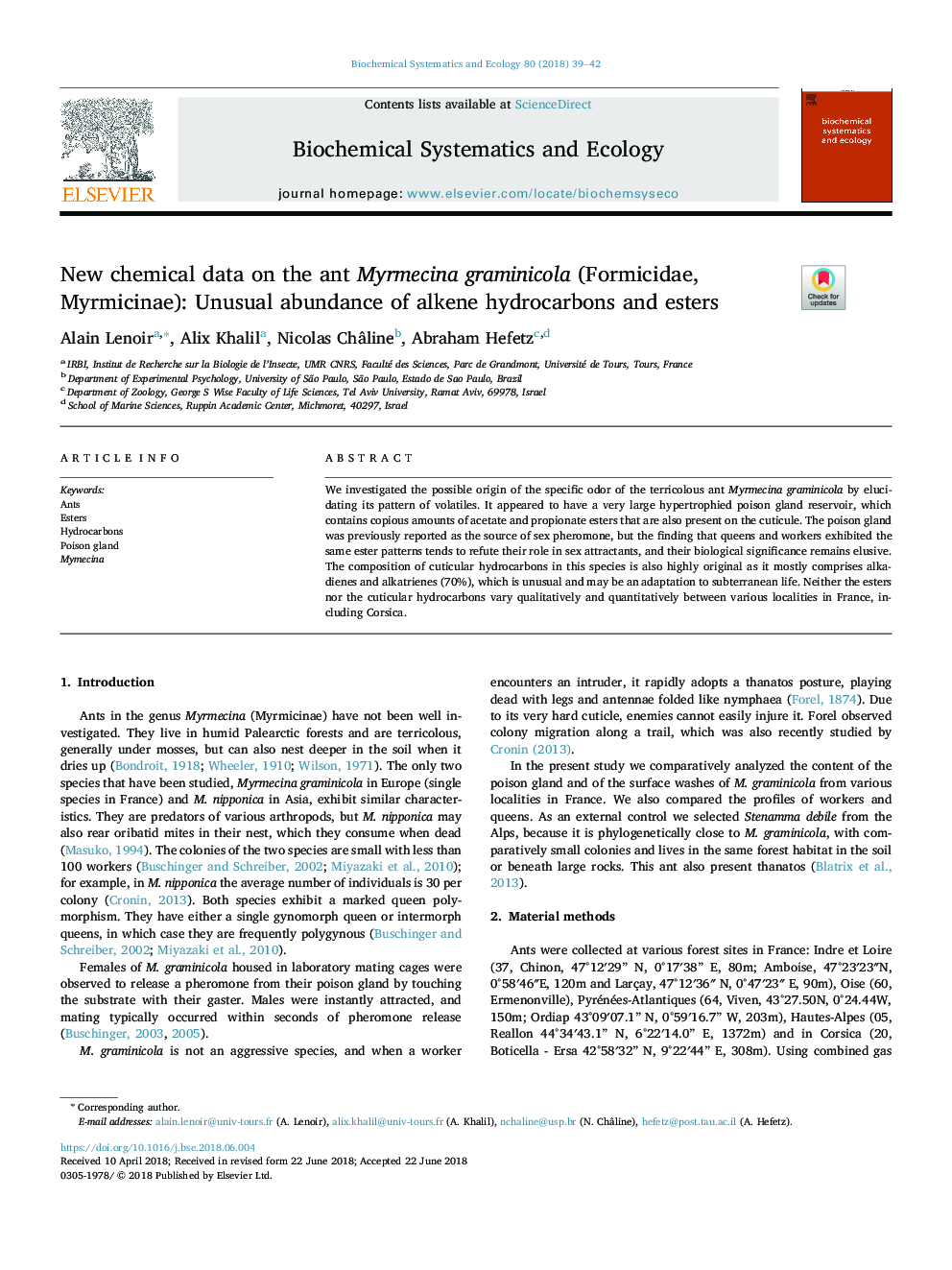| Article ID | Journal | Published Year | Pages | File Type |
|---|---|---|---|---|
| 7767532 | Biochemical Systematics and Ecology | 2018 | 4 Pages |
Abstract
We investigated the possible origin of the specific odor of the terricolous ant Myrmecina graminicola by elucidating its pattern of volatiles. It appeared to have a very large hypertrophied poison gland reservoir, which contains copious amounts of acetate and propionate esters that are also present on the cuticule. The poison gland was previously reported as the source of sex pheromone, but the finding that queens and workers exhibited the same ester patterns tends to refute their role in sex attractants, and their biological significance remains elusive. The composition of cuticular hydrocarbons in this species is also highly original as it mostly comprises alkadienes and alkatrienes (70%), which is unusual and may be an adaptation to subterranean life. Neither the esters nor the cuticular hydrocarbons vary qualitatively and quantitatively between various localities in France, including Corsica.
Keywords
Related Topics
Physical Sciences and Engineering
Chemistry
Organic Chemistry
Authors
Alain Lenoir, Alix Khalil, Nicolas Châline, Abraham Hefetz,
